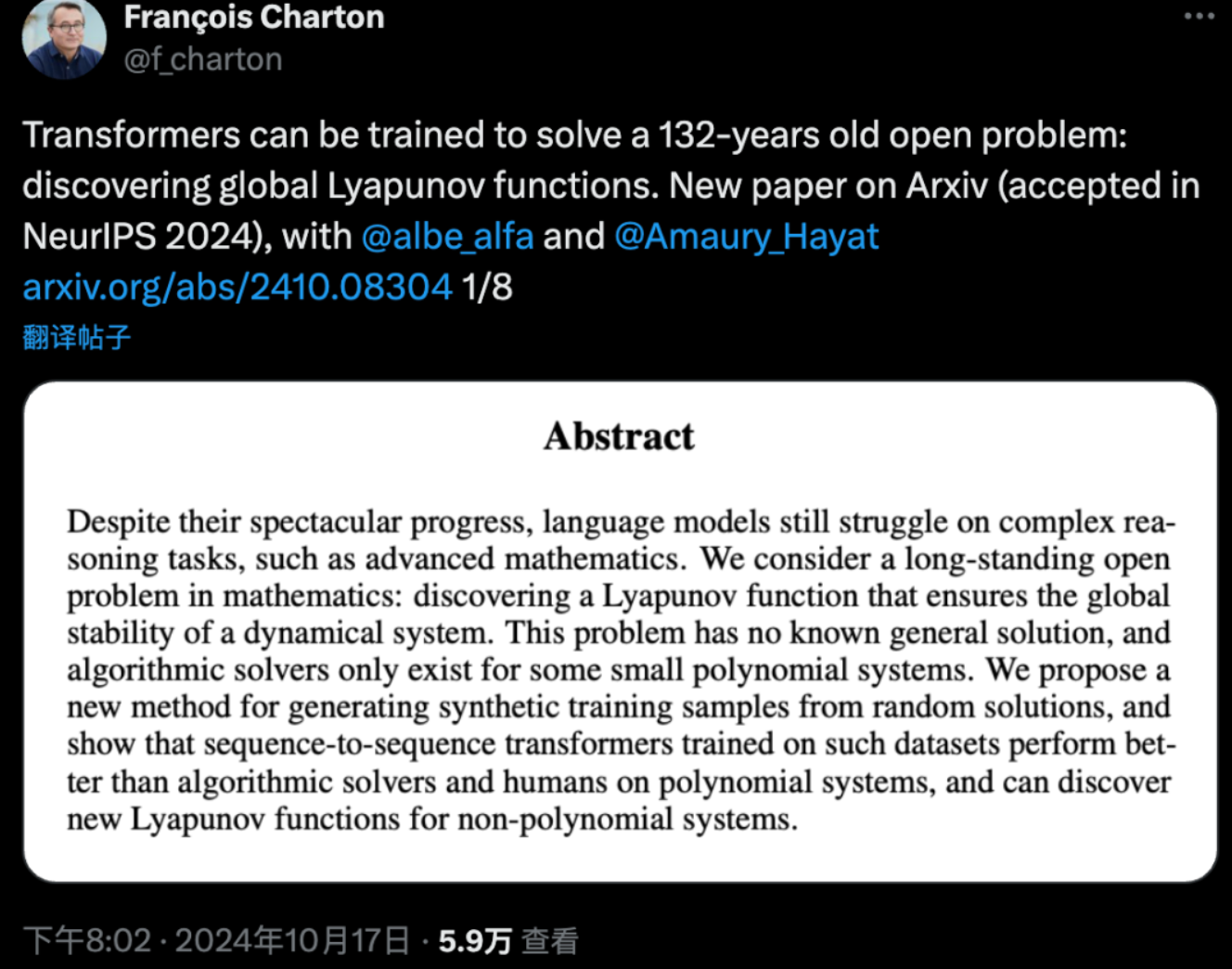
In a groundbreaking development, researchers from Meta and École Polytechnique have successfully solved a 132-year-old mathematical conundrum—Lyapunov functions. This challenge, which has baffled mathematicians for more than a century, was recently tackled using AI, specifically a Symbolic Transformer model. This breakthrough not only advances the field of mathematical AI applications but also opens new possibilities for solving previously unsolvable problems.
The Lyapunov Function Puzzle
The concept of Lyapunov functions is critical in the field of dynamical systems, especially when assessing the stability of systems over time. The Russian mathematician and physicist Aleksandr Lyapunov proposed this approach in the 19th century as a means of determining whether a system remains stable around an equilibrium point. However, no general method for deriving Lyapunov functions existed—until now.
Despite numerous contributions from eminent mathematicians like Newton, Lagrange, and Poincaré, certain complex systems, such as the three-body problem, have remained stubbornly unsolved. The three-body problem illustrates how adding a third object to a two-body orbital system results in chaotic, unpredictable behavior. Lyapunov’s approach provided theoretical insight, but no reliable way to compute solutions for large or complex systems had been found.
How AI Solved It
In their recent study, the Meta and École Polytechnique team introduced a novel AI-driven solution to this age-old problem. They utilized Symbolic Transformers, a variant of AI models tailored to handle symbolic mathematics. By training the Transformer model on specially generated datasets of simple systems and their corresponding Lyapunov functions, the researchers were able to achieve a nearly perfect accuracy rate (99%) on held-out test sets. Even on out-of-distribution (OOD) test sets, the model performed remarkably well, achieving a 73% accuracy rate.
One of the most impressive aspects of this research is the model's ability to handle new, previously unseen systems. By adding just a small amount of new sample data—only 300 examples—the model's accuracy on OOD datasets jumped significantly, demonstrating AI’s potential for generalizing to more complex mathematical problems.
The Power of AI in Mathematical Research
This accomplishment is a major milestone for AI in mathematics. The AI model can provide suggested solutions to complex problems, which can then be rigorously verified for mathematical correctness. This process allows AI to function as a powerful tool for mathematicians, offering conjectures and potential solutions where no existing methods have succeeded. In the case of the Lyapunov function, AI managed to solve problems that have stumped traditional mathematical approaches, such as the Sum of Squares method.
The Three-Body Problem and Beyond
The three-body problem, one of the most famous unsolved problems in classical mechanics, is directly related to the challenge of Lyapunov functions. Although two-body problems can be solved precisely with Newton's laws, adding a third body introduces extreme complexity and chaotic behavior, making it impossible to predict long-term stability. Lyapunov functions can theoretically be used to determine whether such systems will remain stable over time. However, finding these functions has been a monumental challenge for over a century.
With this new AI-driven approach, researchers have taken a significant step forward in understanding and solving these complex systems. The researchers’ Symbolic Transformer model redefines how we approach stability in mathematical systems, offering real solutions where only theoretical understanding previously existed.
Future Implications
This research not only solves the long-standing Lyapunov function problem but also signals the beginning of AI’s role in tackling unsolved problems in mathematics. As AI models become more sophisticated and capable of handling symbolic reasoning, their potential applications in mathematical theory will expand further.
The success of this study could lay the foundation for AI-driven advancements in other mathematical fields, from knot theory to complex dynamical systems. It showcases how AI, when trained on symbolic data, can surpass the limits of human computational capabilities, speeding up discovery in fields that were previously bottlenecked by sheer complexity.
Conclusion
The solving of the Lyapunov function problem by AI is not just a technical achievement; it is a demonstration of the future of mathematical research. Symbolic Transformers have shown that AI can crack problems that have stood for over a century, providing new tools for mathematicians and scientists alike. This research represents a significant leap forward in AI's ability to tackle high-level mathematical problems, and it hints at a future where AI could be a vital partner in scientific discovery.
With AI now capable of solving some of the most complex mathematical puzzles, we are witnessing a new era of collaboration between human ingenuity and artificial intelligence.